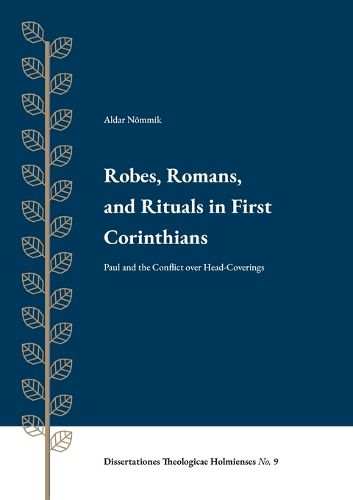Readings Newsletter
Become a Readings Member to make your shopping experience even easier.
Sign in or sign up for free!
You’re not far away from qualifying for FREE standard shipping within Australia
You’ve qualified for FREE standard shipping within Australia
The cart is loading…






This title is printed to order. This book may have been self-published. If so, we cannot guarantee the quality of the content. In the main most books will have gone through the editing process however some may not. We therefore suggest that you be aware of this before ordering this book. If in doubt check either the author or publisher’s details as we are unable to accept any returns unless they are faulty. Please contact us if you have any questions.
This thesis offers a novel interpretation of 1 Cor 11:2-16 in light of the Roman ritual practice of capite velato, a custom of covering the head with a garment during prayer, sacrifice, and divination. It traces linguistic and conceptual links between ancient descriptions and depictions of capite velato and 1 Cor 11:2-16, and demonstrates that this ritual gesture must have been familiar to Paul and his Corinthian interlocutors. With the aid of cognitive science of religion, this thesis explores the possible reasons for and implications of Paul's instructions on this Roman custom in First Corinthians. It argues that 1 Cor 11:2-16 preserves a clash of values between Paul and his addressees in regards to the correct procedure and efficacy of prayer and accessing of divine knowledge: some in Corinth had begun to argue that for the sake of uniformity, all members of the Christ association, including married women of all cultures, should strip their heads of everything when in prayer or when seeking divine knowledge to match the appearance of Roman men whom Paul had asked not to pray with garments over the head. In response to this, Paul found a way to argue that praying with a garment over the head is only shameful for men, but the same does not apply for women, and so women can keep their head-coverings and hair accessories on during prayer and prophecy. While these instructions may have been intelligible to the original readers, later interpreters of Paul, who had no knowledge of the Sitz im Leben that prompted 1 Cor 11:2-16, misunderstood and misappropriated Paul's instructions in this passage, mistakenly believing Paul to have been solely concerned with a faction of rebellious women in the Corinthian congregation. These assumptions have dominated the readings of 1 Cor 11:2-16, but this thesis offers an alternative interpretation that builds on a more accurate understanding of ancient customs and ideals related to ritual head-coverings.
$9.00 standard shipping within Australia
FREE standard shipping within Australia for orders over $100.00
Express & International shipping calculated at checkout
This title is printed to order. This book may have been self-published. If so, we cannot guarantee the quality of the content. In the main most books will have gone through the editing process however some may not. We therefore suggest that you be aware of this before ordering this book. If in doubt check either the author or publisher’s details as we are unable to accept any returns unless they are faulty. Please contact us if you have any questions.
This thesis offers a novel interpretation of 1 Cor 11:2-16 in light of the Roman ritual practice of capite velato, a custom of covering the head with a garment during prayer, sacrifice, and divination. It traces linguistic and conceptual links between ancient descriptions and depictions of capite velato and 1 Cor 11:2-16, and demonstrates that this ritual gesture must have been familiar to Paul and his Corinthian interlocutors. With the aid of cognitive science of religion, this thesis explores the possible reasons for and implications of Paul's instructions on this Roman custom in First Corinthians. It argues that 1 Cor 11:2-16 preserves a clash of values between Paul and his addressees in regards to the correct procedure and efficacy of prayer and accessing of divine knowledge: some in Corinth had begun to argue that for the sake of uniformity, all members of the Christ association, including married women of all cultures, should strip their heads of everything when in prayer or when seeking divine knowledge to match the appearance of Roman men whom Paul had asked not to pray with garments over the head. In response to this, Paul found a way to argue that praying with a garment over the head is only shameful for men, but the same does not apply for women, and so women can keep their head-coverings and hair accessories on during prayer and prophecy. While these instructions may have been intelligible to the original readers, later interpreters of Paul, who had no knowledge of the Sitz im Leben that prompted 1 Cor 11:2-16, misunderstood and misappropriated Paul's instructions in this passage, mistakenly believing Paul to have been solely concerned with a faction of rebellious women in the Corinthian congregation. These assumptions have dominated the readings of 1 Cor 11:2-16, but this thesis offers an alternative interpretation that builds on a more accurate understanding of ancient customs and ideals related to ritual head-coverings.